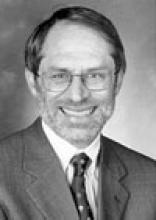User login
President Obama’s Council of Economic Advisers (CEA) released The Economic Case for Health Care Reform on June 2. The report, which is a masterful summary of the sad and unsustainable state of US health care, overlooks the key linchpin in the journey ahead: family physicians.
First, some highlights of the report:
- Health expenditures are expected to be 18% of gross domestic product in 2009.
- Slowing the annual growth rate of health care costs by 1.5 percentage points would increase GDP by more than 2% in 2020, and by nearly 8% in 2030.
- Bringing down health care costs would increase the income of a typical family of 4 by $2600 in 2020, and by $10,000 in 2030 (in 2009 dollars).
- Extending health insurance coverage to the uninsured would increase net economic well-being by roughly $100 billion a year.
How do we realize such staggering savings? According to the CEA, the following changes are imperative:
- Slow cost growth. (At a meeting with the President on May 11, key stakeholders—insurers and pharma among them—pledged to “bend the health care cost curve” by 1.5 percentage points per year.)
- Reorient the financial incentives of providers to value rather than volume.
- Conduct comparative effectiveness research.
- Expand performance measurement and feedback.
- Reduce fragmentation, particularly in administrative services.
- Target fraud and abuse aggressively.
- Engage patients in decision making.
- Expand coverage by establishing an insurance exchange and increasing the availability and affordability of health insurance.
But these changes—and savings—can be achieved only if we have a robust, and valued, primary care workforce. The administration may need to encourage medical students to enter family practice through payment reform, provide incentives for establishing patient-centered medical homes and delivering evidence-based care, or reconfigure reimbursement for graduate medical education. Whatever steps it takes, one thing is certain: Without more family physicians, this plan is doomed.
President Obama, are you listening?
President Obama’s Council of Economic Advisers (CEA) released The Economic Case for Health Care Reform on June 2. The report, which is a masterful summary of the sad and unsustainable state of US health care, overlooks the key linchpin in the journey ahead: family physicians.
First, some highlights of the report:
- Health expenditures are expected to be 18% of gross domestic product in 2009.
- Slowing the annual growth rate of health care costs by 1.5 percentage points would increase GDP by more than 2% in 2020, and by nearly 8% in 2030.
- Bringing down health care costs would increase the income of a typical family of 4 by $2600 in 2020, and by $10,000 in 2030 (in 2009 dollars).
- Extending health insurance coverage to the uninsured would increase net economic well-being by roughly $100 billion a year.
How do we realize such staggering savings? According to the CEA, the following changes are imperative:
- Slow cost growth. (At a meeting with the President on May 11, key stakeholders—insurers and pharma among them—pledged to “bend the health care cost curve” by 1.5 percentage points per year.)
- Reorient the financial incentives of providers to value rather than volume.
- Conduct comparative effectiveness research.
- Expand performance measurement and feedback.
- Reduce fragmentation, particularly in administrative services.
- Target fraud and abuse aggressively.
- Engage patients in decision making.
- Expand coverage by establishing an insurance exchange and increasing the availability and affordability of health insurance.
But these changes—and savings—can be achieved only if we have a robust, and valued, primary care workforce. The administration may need to encourage medical students to enter family practice through payment reform, provide incentives for establishing patient-centered medical homes and delivering evidence-based care, or reconfigure reimbursement for graduate medical education. Whatever steps it takes, one thing is certain: Without more family physicians, this plan is doomed.
President Obama, are you listening?
President Obama’s Council of Economic Advisers (CEA) released The Economic Case for Health Care Reform on June 2. The report, which is a masterful summary of the sad and unsustainable state of US health care, overlooks the key linchpin in the journey ahead: family physicians.
First, some highlights of the report:
- Health expenditures are expected to be 18% of gross domestic product in 2009.
- Slowing the annual growth rate of health care costs by 1.5 percentage points would increase GDP by more than 2% in 2020, and by nearly 8% in 2030.
- Bringing down health care costs would increase the income of a typical family of 4 by $2600 in 2020, and by $10,000 in 2030 (in 2009 dollars).
- Extending health insurance coverage to the uninsured would increase net economic well-being by roughly $100 billion a year.
How do we realize such staggering savings? According to the CEA, the following changes are imperative:
- Slow cost growth. (At a meeting with the President on May 11, key stakeholders—insurers and pharma among them—pledged to “bend the health care cost curve” by 1.5 percentage points per year.)
- Reorient the financial incentives of providers to value rather than volume.
- Conduct comparative effectiveness research.
- Expand performance measurement and feedback.
- Reduce fragmentation, particularly in administrative services.
- Target fraud and abuse aggressively.
- Engage patients in decision making.
- Expand coverage by establishing an insurance exchange and increasing the availability and affordability of health insurance.
But these changes—and savings—can be achieved only if we have a robust, and valued, primary care workforce. The administration may need to encourage medical students to enter family practice through payment reform, provide incentives for establishing patient-centered medical homes and delivering evidence-based care, or reconfigure reimbursement for graduate medical education. Whatever steps it takes, one thing is certain: Without more family physicians, this plan is doomed.
President Obama, are you listening?
